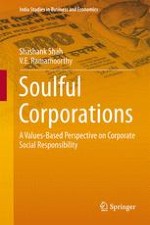2014 | OriginalPaper | Buchkapitel
10. Corporate Citizens at Work: An Introduction
verfasst von : Shashank Shah, V. E. Ramamoorthy
Erschienen in: Soulful Corporations
Verlag: Springer India
Aktivieren Sie unsere intelligente Suche, um passende Fachinhalte oder Patente zu finden.
Wählen Sie Textabschnitte aus um mit Künstlicher Intelligenz passenden Patente zu finden. powered by
Markieren Sie Textabschnitte, um KI-gestützt weitere passende Inhalte zu finden. powered by
